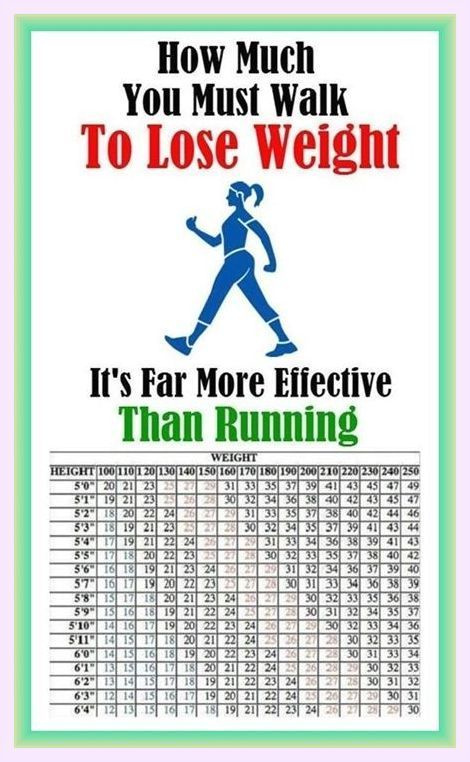Walking is a natural and accessible form of exercise that nearly anyone can incorporate into their daily routine. Not only is it beneficial for improving overall health and fitness, but its impact on weight loss can be significant when paired with good nutritional habits. The challenge lies in determining exactly how much walking is needed to reach personal weight loss goals. To simplify this process, tools like a ‘How Many Steps to Walk to Lose Weight Calculator’ can be invaluable. They take into account individual parameters to estimate the required daily step count, making the journey to a healthier weight more manageable and less mysterious.

Pedometer and Fitness Tracker Applications
Many mobile applications come equipped with a pedometer and fitness tracker. These apps can help you record your daily steps, estimate the calories you burn, and monitor your progress over time.
Detailed Steps:
- Download a pedometer or fitness tracker application on your smartphone.
- Customize the settings including your age, weight, and height for accurate calorie calculations.
- Turn on the step-tracking feature and ensure your phone is on you during the day to accurately count your steps.
- Review your progress regularly and adjust your daily step goal as needed.
Summary:
These apps are beneficial because they provide real-time feedback and can motivate you to increase your activity level. However, this method relies on consistently carrying your smartphone and may be less accurate than dedicated fitness devices.
Online Step-to-Calorie Calculator
An online step-to-calorie calculator is a web-based tool that can give you an estimate of how many calories you burn per steps taken.
Detailed Steps:
- Find an online step-to-calorie calculator through a simple search.
- Input your weight and the number of steps you’ve walked.
- The calculator will estimate the number of calories burned.
Summary:
This calculator is easy to use and can be accessed from any internet-enabled device. The primary limitation is that it provides only rough estimates and does not account for different walking intensities or terrains.
Walking Groups
Joining a walking group can introduce structured walking schedules, which could help in setting and accomplishing clear step goals.
Detailed Steps:
- Search for local walking groups via community boards, social media, or dedicated walking apps.
- Attend group walking sessions and make it a routine.
- Some groups may offer tracking sheets or resources to note down your steps.
Summary:
Walking groups not only offer motivation and socializing but also help you stick to a regular walking regimen, potentially increasing your total steps. However, fixed schedules and group paces might not suit everyone.
Fitness Watches and Wearables
Fitness watches and wearables are designed to track various physical activities, including walking.
Detailed Steps:
- Choose a fitness watch or wearable that has a step-tracking feature.
- Wear the device consistently throughout the day.
- Set daily step goals and monitor progress directly on the device.
Summary:
They are generally more accurate than phone apps and convenient to wear. However, they can be an additional cost to the user and require charging and maintenance.
Treadmill with Step Counter
Using a treadmill that has a built-in step counter can be an excellent way to track steps in a controlled environment.
Detailed Steps:
- Start by setting yourself a step goal.
- Use the treadmill and keep an eye on the step counter to track your progress.
- Record daily step counts to monitor trends over time.
Summary:
A treadmill is great for walking regardless of weather conditions and accurately tracking steps. The downside is that treadmills can be expensive, and using one requires space and access to electricity.
Chart or Journal Logging
Creating your log in a chart or journal can be a helpful manual tracking method.
Detailed Steps:
- Use a simple notebook or a printed chart to log steps.
- If using an estimation method, note down the steps after each walk.
- Review and tally your weekly steps to track your progress.
Summary:
Logging steps manually is cost-effective and personalizable. However, it’s susceptible to human error and relies on regularly remembering to make entries.
Step Challenge Applications
Competitive step challenge applications encourage users to reach their step goals by engaging in friendly competition.
Detailed Steps:
- Download a step challenge application.
- Set up your profile and goals.
- Join challenges and compete against friends or others in the app community.
Summary:
The competitive nature often inspires increased activity levels, but these apps require a level of tech-savviness and may have privacy concerns for some users.
Interactive Walk-at-Home Videos
Interactive videos or DVDs are designed to help users work out at home by following guided walking sessions.
Detailed Steps:
- Find walk-at-home videos or DVDs online or in stores.
- Schedule a daily time to complete the walking workout.
- Follow the guided steps and track your progress per the video’s guidance.
Summary:
These guides are excellent for those who prefer to walk indoors with guided support but may not cater to all fitness levels or personal preferences.
Mapping Out a Regular Route
For outdoor walkers, mapping a consistent route can help in measuring steps.
Detailed Steps:
- Use an online map or GPS device to plan a walking route.
- Walk the route and track your steps using an app or wearable.
- Adjust the route as needed to meet your step goals.
Summary:
Consistency with a route makes it easier to estimate average steps taken but can become monotonous over time, and outdoor walking is weather-dependent.
Consulting a Professional
A health or fitness professional can offer personalized advice on how many steps you should be walking based on your specific health goals and abilities.
Detailed Steps:
- Make an appointment with a professional.
- Discuss your weight loss goals and any current physical activities.
- Get a tailored step count recommendation and follow-up regularly for adjustments.
Summary:
Personalized advice can be highly effective, but it can be costly, and not everyone may have access to such professionals.
Conclusion:
Incorporating a daily walking routine is a proven and effective way to lose weight. Utilizing tools like step counters, walking groups, or fitness wearables can provide structure and motivation. The key is to find a method that suits your lifestyle and preferences to ensure consistency and enjoyment in your walking routine.
FAQs:
-
How many steps should I walk a day to lose weight?
While the common recommendation is 10,000 steps a day to maintain health, weight loss goals may require more. The exact number will depend on factors such as your weight, diet, and walking pace. -
Can I trust the calorie count on a pedometer or fitness watch?
These devices provide an estimate of calories burned based on the step count and personal data. They are not 100% accurate but offer a good baseline for tracking progress. -
What if I can’t walk due to bad weather or safety concerns?
You can use walk-at-home videos, a treadmill, or indoor walking circuits within malls or large stores to continue your walking routine uninterrupted.









